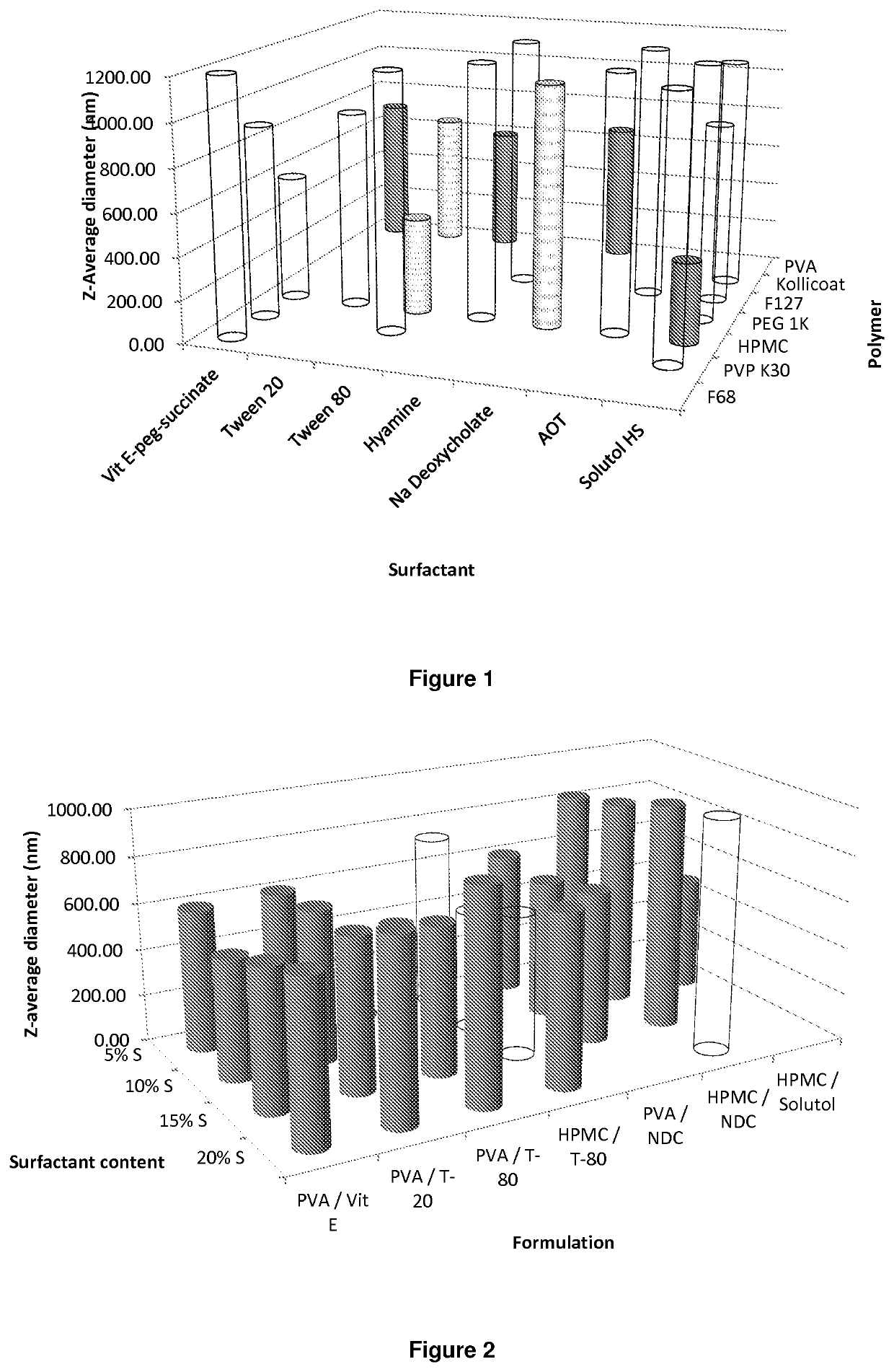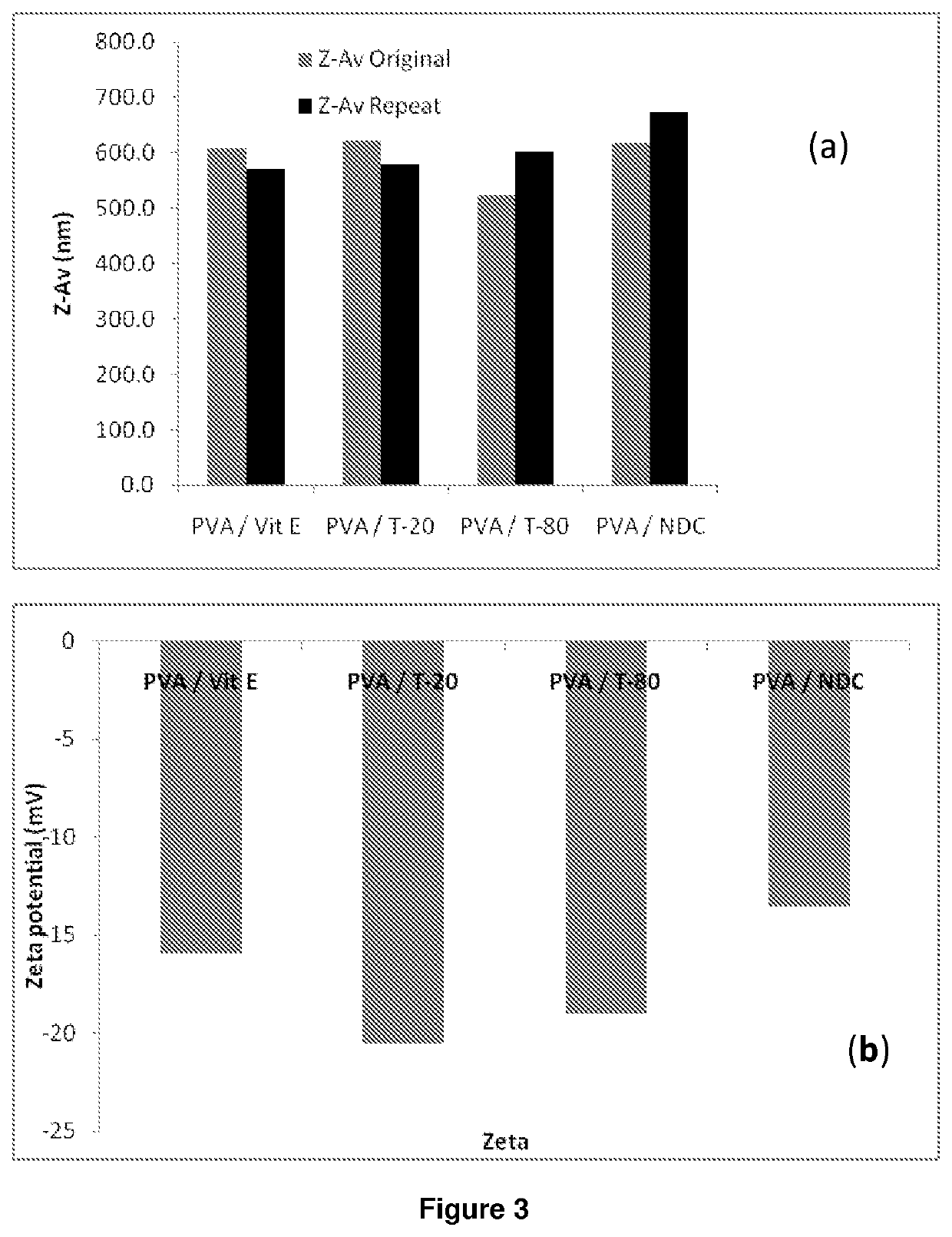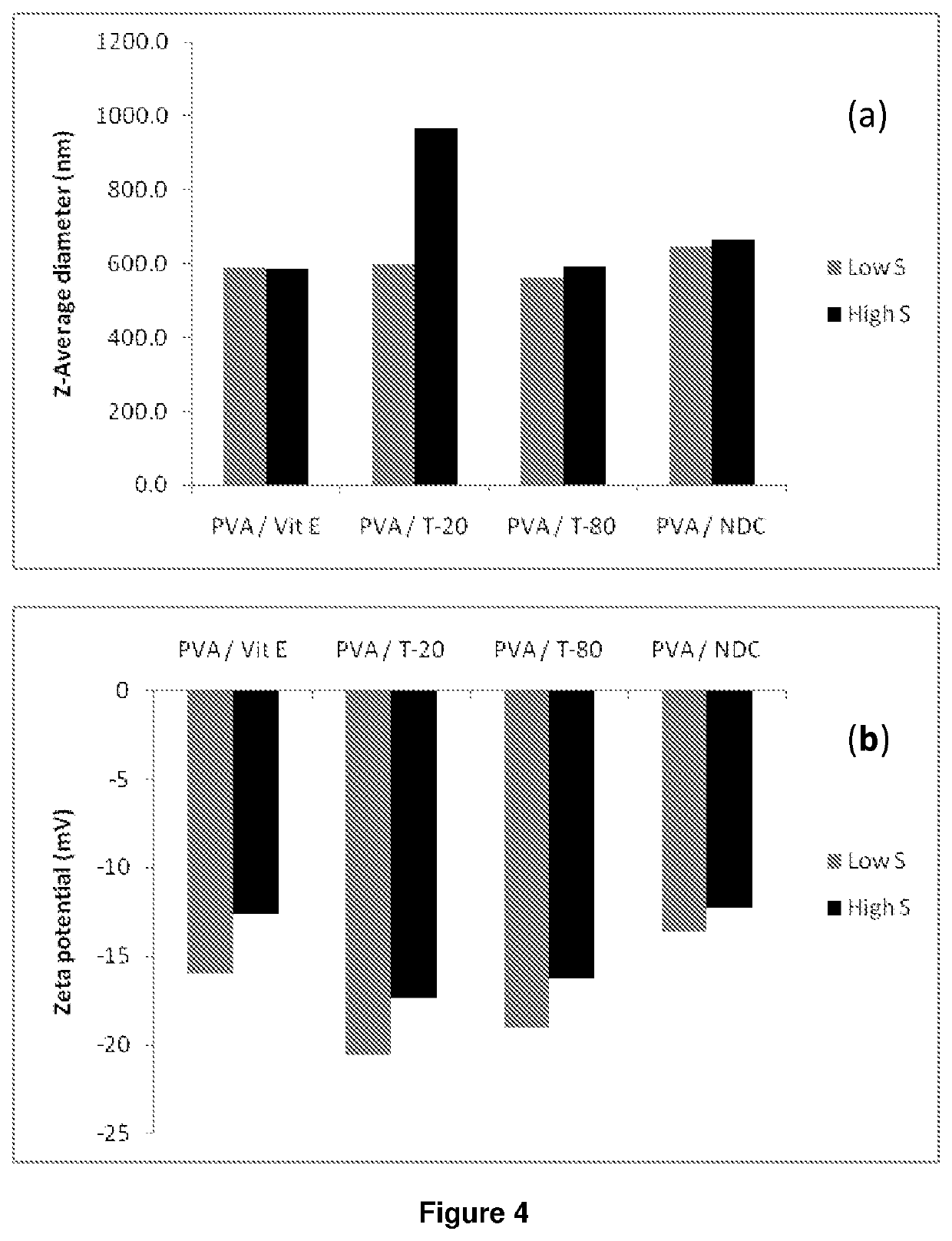Compositions of lopinavir
a technology of lopinavir and composition, which is applied in the field of composition of lopinavir, can solve the problems of insufficient drug penetration into cells, variable penetration of the drug into cells, and inability to meet the needs of patients, and achieve the effect of high drug loading
- Summary
- Abstract
- Description
- Claims
- Application Information
AI Technical Summary
Benefits of technology
Problems solved by technology
Method used
Image
Examples
example 1
for Nanoformulations—10 Hydrophilic Polymers, 16 Surfactants
[0236]Samples are prepared using a 10 mgml−1 stock solution of lopinavir (A) in chloroform, a 22.5 mgml−1 of polymer (P) and a 22.5 mgml−1 stock solution of surfactant (S). Stock solutions are added in the following proportion; 100 μl (A); 267 μl (P) and 133 μl (S), therefore solid mass ratio is; 10% (A), 60% (P) and 30% (S) in an 1:4 oil to water (O / W) mix. The mixtures are then emulsified using a probe sonicator (UP400S manufactured by Hielscher (Germany)), fitted with an H3 titanium probe) operated at 20% amplitude for 7 seconds followed by immediate cryogenic freezing.
[0237]A matrix of 160 samples (comprised of 10 different polymers and 16 surfactants) was prepared. Once all 160 samples had been prepared, they were lyophilised (Virtis benchtop K) for 42 hours to leave a dry porous product, the samples were then sealed in individual vials until analysis.
[0238]The polymers and surfactants employed in this screen are detai...
example 2
lations Assessed in Biological Assays
[0245]‘Hits’ (i.e. those listed under Example 1 in Table 10) from the previous screen were remade in accordance with the procedures described in Example 1 in replicate (one sample to be characterised by DLS and zeta potential analysis, with an additional sample for each biological assay to be carried out).
example 3
lled Nanoformulations for Biological Assays
[0246]14C radiolabelled efravirenz samples were prepared in order to carry out cell accumulation and transwell (i.e. transcellular permeability) pharmacology studies. The samples were prepared based on the hits from the previous two screens (i.e. Example 1 and 2), i.e. 74 hits of 60% (P):30% (S); and 77 hits of 75% (P):15% (S). The samples were prepared in triplicate; one cold batch for DLS analysis and two hot batches pharmacology study. Both the cold and hot samples were prepared following the same samples preparations mentioned previously. However, in order to prepare hot actives, 25 μC of 14C labelled LPV in ethanol was measured out. The solvent was allowed to evaporate away and the stock solution of cold LPV was added to the remaining solid, i.e. 286 mg in 28.6 ml of chloroform ((2×74)+(2×77) in 286×100 μl chloroform). The cold batches were then studied via DLS to determine both z-average and zeta potential.
PUM
 Login to View More
Login to View More Abstract
Description
Claims
Application Information
 Login to View More
Login to View More - R&D
- Intellectual Property
- Life Sciences
- Materials
- Tech Scout
- Unparalleled Data Quality
- Higher Quality Content
- 60% Fewer Hallucinations
Browse by: Latest US Patents, China's latest patents, Technical Efficacy Thesaurus, Application Domain, Technology Topic, Popular Technical Reports.
© 2025 PatSnap. All rights reserved.Legal|Privacy policy|Modern Slavery Act Transparency Statement|Sitemap|About US| Contact US: help@patsnap.com



